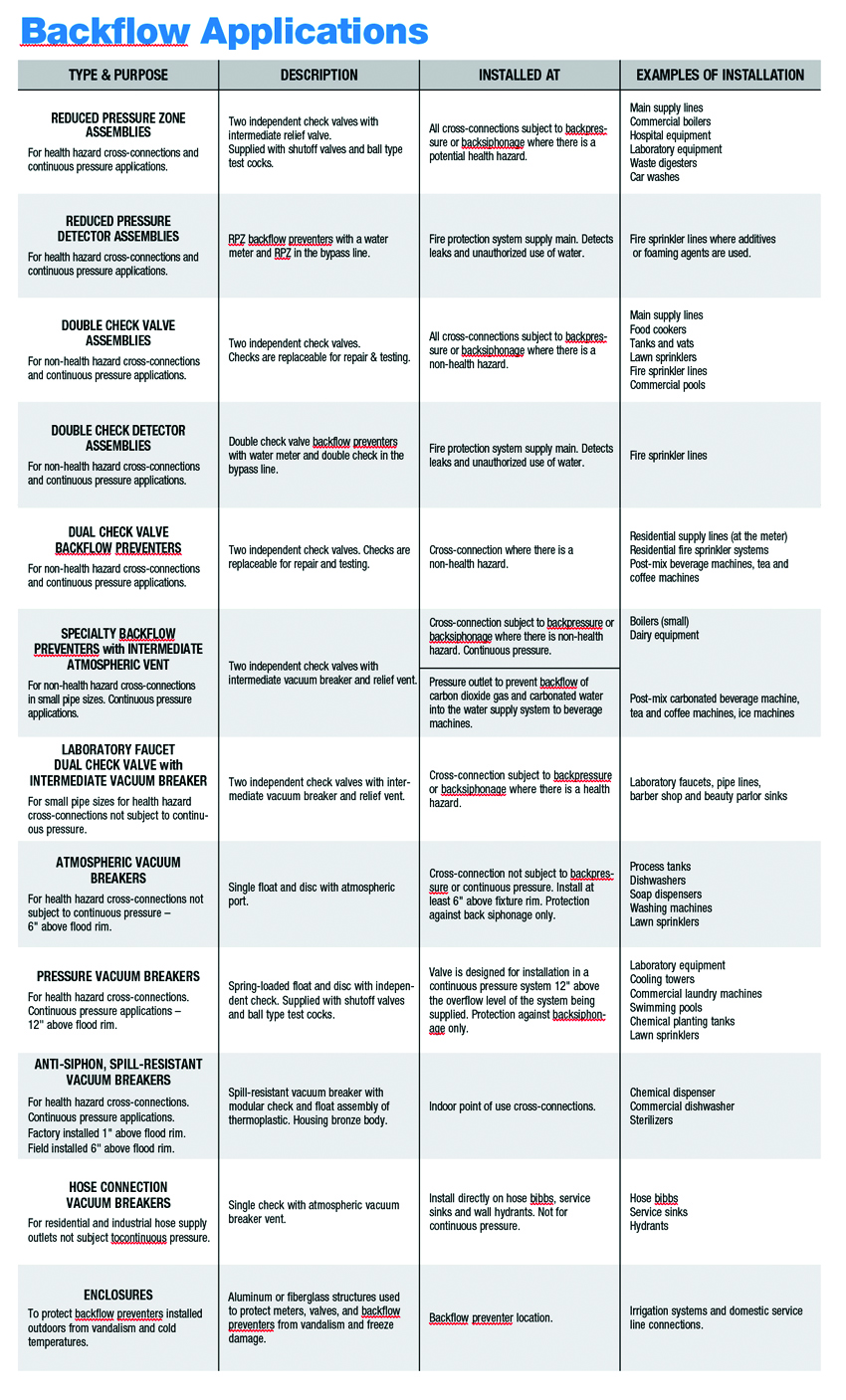Water Safety and Backflow Prevention
Design Tips to Avoid Failures
The following list of best practices will lead the design professionals to successful cross-connection systems. The project manager will provide guidance throughout schematic design (SD), design development (DD) construction documentation (CD), construction administration (CA), and commissioning. Providing a strong review and analysis of cross-connection controls is critical to the safety and resiliency of the complete water system.
- Meet with the mechanical engineer (ME) to review equipment requirements and locations for non-hazardous and hazardous applications that require appropriate backflow prevention systems. (SD, DD)
- Contact the AHJ and continue to monitor and review all permitting authorities (federal, state, and local) to plan permit scheduling. (SD, DD, CD, CA)
- Verify that all systems meet regulatory requirements, particularly for local jurisdiction. (SD, CD)
- Review construction documents for locations and orientation of all check valve equipment for accessibility for maintenance, replacement, and annual testing. (CD)
- Conduct a value survey for all systems and consider future maintenance and repairs. Review the potential for whether a smaller and lighter units or assemblies should be installed. (CD)
- Review with construction team the protection of piping and fixtures in storage or on site. Warranties do not cover poor installation and the improper flushing of plumbing lines. This can cause debris to clog valves. The primary cause of early installation failures is that lines are improperly flushed and debris is caught in the first check valve. Chunks of concrete, gloves, and animals have been found in RPZAs, and instead of removing the valve for return to the manufacturer, a qualified professional can open it up to repair the system. (CA)
- Provide proper commissioning and test for the potential for line failures including construction debris, improper flushing, change in locations for hazardous applications, line pressure, freeze protection, etc. Require maintenance and repair manuals for all applicable systems. Manuals should include repair and replacement code and permitting requirements as well as schedules for testing. (Commissioning)
- Require certified and qualified technicians for replacements and repairs to backflow prevention equipment.
Typical cross-connection controls are simple mechanical systems based on the pressure dynamics of flow control. Most of these mechanisms have not dramatically changed since the last century. However, a few innovations may be soon coming to market. Among these are digital controls that may be able to diagnose leak conditions at earlier stages. These systems may be able to be hooked up to automatic building management. Smaller, lighter, and modular components are now on the market. These new products will not only impact the installation of backflow preventers but also change the ongoing maintenance, replacement, and repair of cross-connection controls.
Protecting public health, safety, and welfare through a safe water supply depends on understanding cross-connection control systems. Professionals, who understand the basics of backflow prevention are better able to protect drinking water, conserve water resources, and provide resilience to all buildings.

Shown are backflow applications.
End Notes
1Water Quality Standards Handbook. U.S. Environmental Protection Agency. Web. 20 February 2020.
2Potential Contamination Due to Cross-Connections and Backflow and the Associated Health Risks. U.S. Environmental Protection Agency. Web. 22 February 2020.
3Cross Connection Control Manual. U.S. Environmental Protection Agency. Web. 17 February 2020.
4Plumbing Code 2015 of Utah. UpCodes. Web. 21 February 2020.
5Manual of Water Supply Practices: Backflow Prevention and Cross-Connection Control Recommended Practices. American Water Works Association. Web. 19 February 2020.
6“Water Turned Into Wine.” Robb Report. Web. 9 March 2020.
7,8 Womack, Kim. “Back-Flow Incident Leads to Discontinuation of Tap Water Usage Citywide Until Further Notice.” City of Corpus Christi News Room. 14 December 2016. Web. 9 March 2020.
Celeste Allen Novak is an architect and author whose Michigan practice focuses on sustainable and universal design. www.linkedin.com/in/celestenovak










